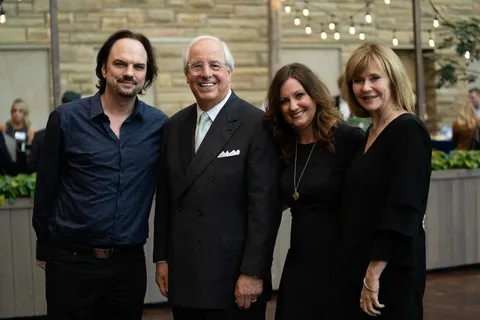Picture this: a smooth-talking con man jets across the skies, charming everyone in his path. That’s the flashy image from Catch Me If You Can, the Spielberg film that turned Frank Abagnale Jr.’s wild scams into box-office gold. But what about the woman caught in the whirlwind? Kelly Anne Welbes Abagnale, Frank’s wife, often fades into the background of that tale. She’s not just a side character—she’s the heart of the real drama, facing lies, risks, and a fight to reclaim her own life. This article digs deep into Kelly Anne Welbes Abagnale’s story. We’ll explore her world before Frank, the chaos of their marriage, and her quiet strength after it all. Sure, the movie glamorizes the cons, but it skips the raw human side—the fear, the trust shattered, and the long road to normalcy for those left behind.
Section 1: Kelly Anne Welbes Before Frank Abagnale
Early Life and Background Context
Kelly Anne Welbes grew up in a steady home in the Midwest. She chased a simple path: education, a job, and dreams of stability. Unlike the high-stakes world Frank later pulled her into, her early days felt ordinary and safe.
Public records show little drama in her youth. She finished high school and moved toward a career in aviation. By her early twenties, Kelly worked as a flight attendant for a major airline. That role suited her—professional, travel-filled, but grounded in routine checks and passenger smiles. Friends recall her as kind and reliable, the type who planned ahead. Her life screamed normalcy, a far cry from the impostor games Frank played.
The Meeting: Attraction and Immediate Circumstances
They crossed paths in the skies, or so the story goes. Frank, posing as a Pan Am pilot named Frank Williams, met Kelly during a layover in the late 1960s. She was on duty, he flashed that pilot badge, and sparks flew fast. What caught her eye? His confidence, sharp looks, and tales of adventure. To her, he seemed like the perfect match—a fellow traveler with big plans.
Their bond grew quick. Dinners turned to dates, and soon they talked future. Kelly saw a man on the rise, not the fugitive hiding in plain sight. Banks and airlines buzzed with his scams back then, but she had no clue. Trust built on his charm, pulling her into a romance that felt exciting yet secure.
Section 2: Marriage, Deception, and Shared Turbulence
The Quick Marriage and the Hidden Truths
Just months after meeting, they tied the knot in 1970. Frank swept Kelly off her feet with promises of a bright life together. She quit her job to support his “career,” unaware of the forgeries funding their start. Truth hit hard when hints of his past surfaced—fake checks, borrowed identities. Did she learn it all at once, or in pieces? Records suggest a slow burn, with Frank confessing bits to keep her close.
Her role edged into danger. Once, Frank used her name on a bogus account, tying her to his schemes without full consent. Prosecutors later eyed her involvement, but evidence showed she acted out of love, not greed. That blurred line left her vulnerable, a pawn in his high-wire act. Imagine the shock: your husband, the man you vowed to, living a lie that could drag you down too.
Life on the Run: A Passenger to Imposture
Travel defined their early years. Frank jumped from pilot gigs to doctor roles, with Kelly by his side in hotels and hospitals. She played nurse in Georgia, handing out fake meds under his watch. The thrill masked the stress—constant moves, whispered fears of arrest. Psychologists note how such lives erode trust; for Kelly, it meant second-guessing every smile from her partner.
Legal heat built. In 1969, the FBI closed in, but their bond held till the end. Kelly faced no direct charges for his cons, yet the shadow lingered. One report from the time quotes an agent: “She was along for the ride, not steering the ship.” Still, the toll showed in her eyes—exhaustion from a fabricated world.
The Turning Point: Separation and Legal Repercussions
Frank’s capture in 1971 shattered it all. French police nabbed him in a hotel, far from Kelly’s reach. She got the call: her husband, a wanted man. Heartbroken, she chose distance, filing for separation soon after. What pushed her? The lies piled too high, and self-preservation kicked in.
Court docs reveal her side. During Frank’s trial, Kelly cooperated, sharing details that helped build the case. A prosecutor later said, “Her words painted the full picture—innocent wife, not co-conspirator.” She dodged charges, thanks to proof of her unawareness. That split marked her fresh start, though scars from the spotlight ran deep.
Section 3: The Aftermath: Kelly Anne Welbes Post-Abagnale
Rebuilding Identity Away from the Spotlight
After the dust settled, Kelly vanished from headlines. She changed her name back to Welbes and sought quiet corners. Moving states helped—away from prying eyes and old ties. Rebuilding meant new jobs, maybe retail or admin work, far from aviation’s glare.
Challenges stacked up. Public links to Frank’s fraud made trust hard; employers paused, friends drifted. Yet she pushed on, raising their young sons alone at first. Her story echoes many: spouses of criminals clawing for normalcy. One expert on white-collar fallout notes, “Women like Kelly often lose careers overnight, fighting stigma for years.”
Legal Status and Testimony
Kelly’s help proved key. In U.S. courts post-extradition, her statements clarified Frank’s solo moves. She testified briefly, focusing on his tricks, not her pain. That cooperation shielded her—no indictments, no jail time.
Outcomes stayed light. Frank served time, then consulted for the FBI, but Kelly walked free. Her role as witness shifted the narrative: from potential accomplice to victim of deceit. Today, legal scholars cite her case in fraud studies, highlighting unwitting partners’ plights.
Section 4: Kelly Anne’s Legacy in the Frank Abagnale Narrative
Portrayals in Media: Fact vs. Fiction
Hollywood twisted Kelly’s tale for drama. In Catch Me If You Can, a character inspired by her—think the naive love interest—appears briefly, all wide-eyed innocence. Actress Elizabeth Banks plays Paula, but the real Kelly gets short shrift. The film skips her post-capture struggles, turning her into a plot device.
Truth diverges big time. Frank’s book nods to her more, calling her his anchor amid chaos. Yet even there, details blur for flair. Media often ignores her resilience, focusing on his redemption arc. Why? Stories sell cons, not the quiet aftermath for wives like Kelly Anne Welbes Abagnale.
Actionable Takeaway: Recognizing Unseen Victims of Financial Crime
White-collar crimes ripple out, hitting families hardest. Spouses bear the emotional load, from shame to financial ruin. Stats show over 60% of fraud cases involve loved ones in fallout, per FBI reports.
Here’s a simple tip: When you read about famous crooks, dig for family stories too. Check court records or interviews to see the full cost. It humanizes the headlines.
- Spot red flags in relationships: Sudden wealth or secrecy?
- Support victims: Groups like crime survivor networks offer real help.
- Learn from it: Build financial smarts to avoid similar traps.
Conclusion: The Unwritten Chapter of Kelly Anne Welbes
Kelly Anne Welbes Abagnale’s path started steady, dove into deception, and rose through grit. From flight attendant to fugitive’s wife, she navigated lies that could have broken anyone. Her choice to step away and rebuild shows true strength—the kind movies rarely capture.
Behind every con artist’s legend sits real pain. Kelly’s life reminds us: glamour hides hurt. Her legacy? A call to see the whole story.
- Normal roots led to unexpected chaos.
- Marriage mixed love with risk, ending in capture and split.
- Post-story resilience turned victims into survivors.
Next time you watch Catch Me If You Can, think of Kelly. What’s one step you can take to spot deceit in your own life? Share your thoughts below—let’s talk real stories.





